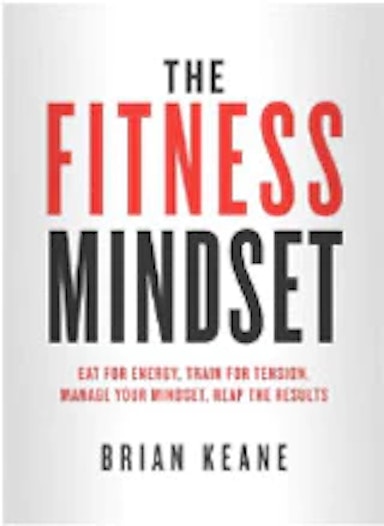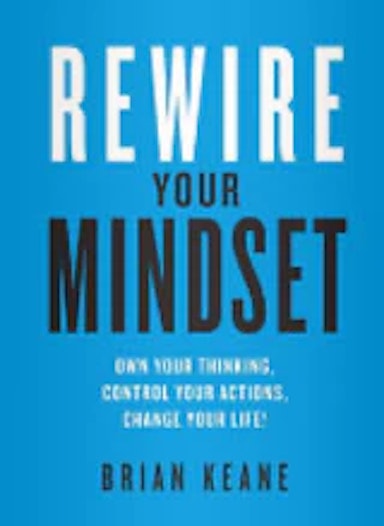Using Quality Content To Build Your Business And Social Media Following
- By Brian Keane
If you’ve ever asked yourself the questions, “how do I get more followers on Instagram” or how can I get more people to read my blog, listen to my podcast, like my Facebook page, then today’s blog post should support you greatly.
During one of my full day business seminars earlier this month, I spoke about the difference between ‘making sales’ and ‘building brand’. Sales is the direct result of converting the leads that you get for you business, its short term. It’s kind of like a 100m sprint.
Building brand on the other hand is more like a marathon. It creates more sales consistently over time. You build up brand and trust equity over days, weeks and months of providing consistent content that’s valuable for the people that are following you. Then, if and when you release a product, create a new service or have space in your current service, you don’t have to break the bank on Facebook ads trying to convert people who don’t even know who you are.
Now don’t get me wrong, sales are very important for your business, in fact, they’re the lifeblood of your business. If you don’t make sales, you can’t generate revenue and if you’re not generating revenue, you cant continue to support or serve people with your product or service. It’s a simple as that.
One of my mentors used to tell me “how you make your money is as, if not more important than how much money you make” – translation: you must believe in what it is that you’re selling.
At the start of my business seminars, I normally open with the line that “if you never sell something you wouldn’t buy yourself, then you’ll probably survive in business” – truthfully, that one line alone can make you a decent living in any business. It probably wont make you a fortune, you need other skills and talents to serve more people for that to happen, but it’s a decent start.
When it comes to building brand then, nothing beats marketing in 2019 like content marketing i.e. putting out written, audio or video content (depending on your skill set) across the platforms where your audience’s attention is.
It can be overwhelming to think about all the different social media platforms, blogging sites or audio applications that you could potentially use to build your brand and get people to know who you are; but I’m going to simplify it right now.
If you know who your avatar is, the person it is you are trying to help or serve, then you focus your content on the platform where their attention is highest. Which brings me to my first point. Know your avatar.
1. Know your avatar:
There’s an old saying in business that “when you try and talk to everyone, you end up talking to no one” and if you’ve attended my business seminars or talks, you know how big I am on focusing on market niches i.e. specific groups of people with a similar pain points.
This strategy is obviously much more lucrative in financial terms; for example, there’s a reason that a brain surgeon gets paid more than a general practitioner doctor, they’re more specialised as to warrant a higher price for their service. Its basic supply and demand, there’s less people who know how to do brain surgery, so they charge more.
However, on top of that, having a market niche or more specifically an ‘avatar’ makes it easier to create content and gives you inside information on where best to distribute that content that you do create.
For example if you work with mostly under age GAA players, your avatar’s name might be John, a 16 year GAA footballer who wants to get bigger and stronger for sport. If the fictional John is your avatar, you keep him in mind when writing a blog, creating an online program or making a video. You ask yourself the questions “does this video help John?’ – if it does, you press publish, if it doesn’t, you tweak it until it does. It really can be as simple as that. Now, that doesn’t mean that you only work with 16 year old GAA players but it gives you an idea of who are you speaking to when creating content. If you know John’s pain points, then you can be pretty sure that there are others like John who have the same pain point so you create content around that demographic and focus on their main issues – learning basic compound lifts, eating nutrient dense food, simple food prep etc. After that, you distribute it to the platform that currently holds their attention; in this case Snapchat and probably Instagram (stories in particular). Most 16 years don’t listen to podcasts (yet) and they don’t think Facebook is cool (their mom and dad are on it for god sake) so spending time, energy or effort on these platforms probably isn’t the best use of your time.
On the other end of the spectrum, if you’re avatar is a 27-year-old female who commutes 40 minutes to and from work every day, then consider creating content in audio form to break up their journey. A large majority of people who listen to my Podcast are 24-34 year olds who listen when they are doing something else – traveling to or from work, doing cardio in the gym or prepping their meals so I try and create podcast that fits that life model.
Podcasts and audio are blowing up at the minute because they’re passive i.e. you can do something else while you’re listening and it saves people time. If your market is in this demographic, then you should seriously consider getting your message across while the popularity continues to grow.
Of course its always better to create content for all the platforms and split it across the three ways we consume information – written (blog), audio (podcast) and video or pictures (social media) but I only advise doing using that strategy if you enjoy it. I do all three because I enjoy creating in all three mediums and it also gives me more context on where the business people I work with should deploy their attention; but the main take home is to get clear on your avatar and focus in the high priority places.
The next question that normally follows that is ‘how do I know what content to create?’ – Which segway’s perfectly with my next point, what are your avatar’s pain points?
2.What are their pain points?
We overcomplicate business sometimes. It really is as simple as ‘what are my clients pain points and how can I help them’ – of course it gets more complicated as you climb that ladder but the basic message holds true.
For example, I use sensitive teeth toothpaste and have done for at least ten years. If you don’t have sensitive teeth, you’ll more than likely use any toothpaste that’s in front of you; but if you’re like me, then your pain point is more extreme than someone who just brushes because they have to. Sensitive teeth toothpaste is normally more expensive because the pain point is bigger, thus justifying a higher price. However, I never mind spending the extra money as it directly fixes my pain point. Your business is exactly the same!
If you’re a personal trainer, your clients have pain points, – they want to lose weight, get fitter, feel more confident etc. The more in touch you are with your clients pain points, the better you can serve them with your service. But it also gives you content creation ideas.
If four of your clients asked about fasted cardio or breakfast ideas this week, then you write a blog post or create a video around that particular topic. This does two things. One it brings more people into your ecosystem who have the similar problems (like refers like) and two it gives you a place to send your current clients if they ask the same questions (which saves you repeating yourself over and over again).
There’s a misconception that you’ll ‘run out of ideas’ with content and I’m going to quash that now as its actually the opposite to what everyone thinks. The more content you put out (starting with the first piece), the more ideas you’ll get. I put out as much content as anyone – podcasts, Facebook groups messages, Instagram, blogs etc. and its down to utilising my next point. Using comments, messages and DM’s from your current audience to create more content.
3. Use the questions you’ve already been asked!
When I mentioned this at a recent seminar, I saw more figurative penny drop moments than anything else I said around the topic of content creation. If you’ve been reading my business blog posts for a while or have worked with me on your business in any way (business seminar, Skype consultation or full day business builder), then you already know how big I am on quality over quantity when it comes to social media following.
I would prefer you to have 179 people following you, whereby 150 are potential customers or clients and see you as someone that can help them with their pain point than 10,000 people following you because you look sexy or have great abs.
True, the ego boost of having a decent follower count is nice but it doesn’t put any money into your pocket and doesn’t really serve or help your community or tribe.
Ironically if you do the things I mentioned in this blog post, finding your avatar, prioritising the platforms that hold their attention and putting out valuable content that address their pain points, then your follower count will grow as a result. It’s the law of reciprocity, if you’re putting out valuable content that helps people; of course they’re going to follow you. If you’re not using content marketing in 2019 to build your personal or business brand, then you are missing a massive trick.
Of course its impossible to give an individual strategy as everyone business is different and I’ll be covering the specifics in my upcoming business seminars (its limited to 20 people for this exact reason) but just remember similar to nutrition and training, random eating and random training leads to random results. Your business is the same, random posts on random sites to random people leads to random results. Get clear on who it is you are speaking to, put out content that shows them that you’re a person who knows how to fix their pain points and do it consistently over time.
Remember ordinary things done consistently well leads to extra ordinary results.


